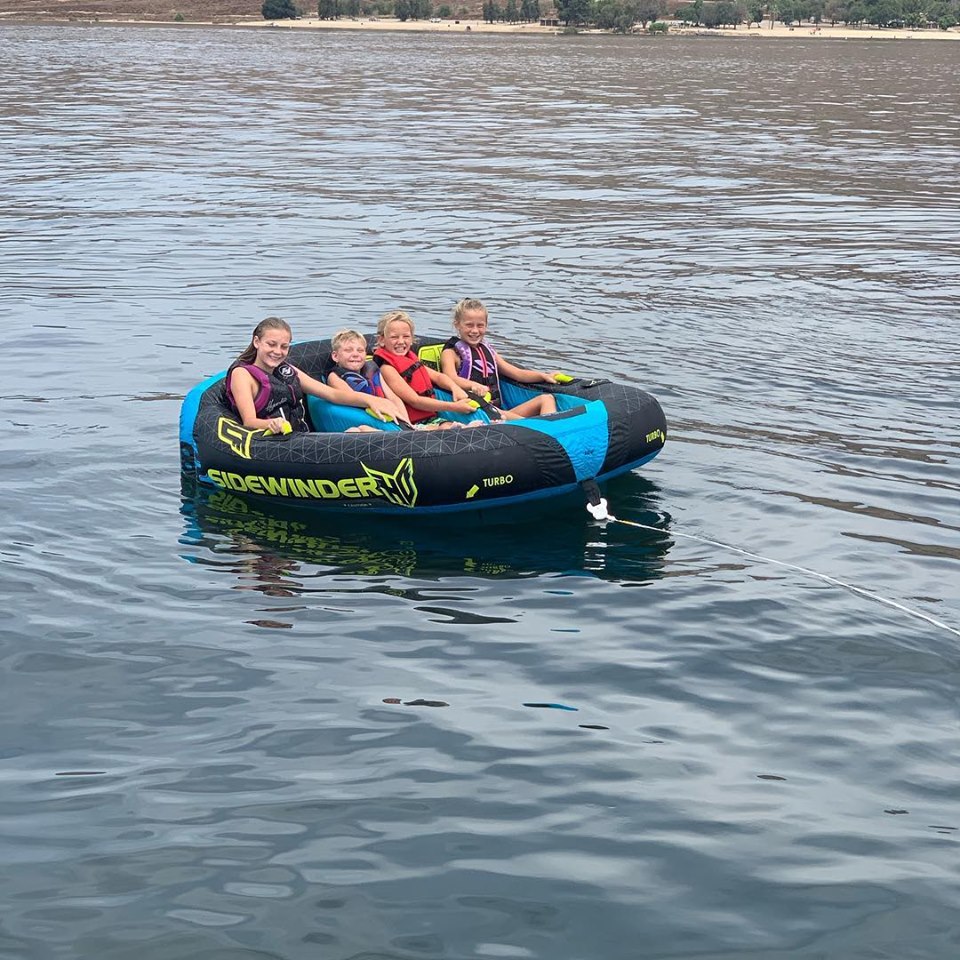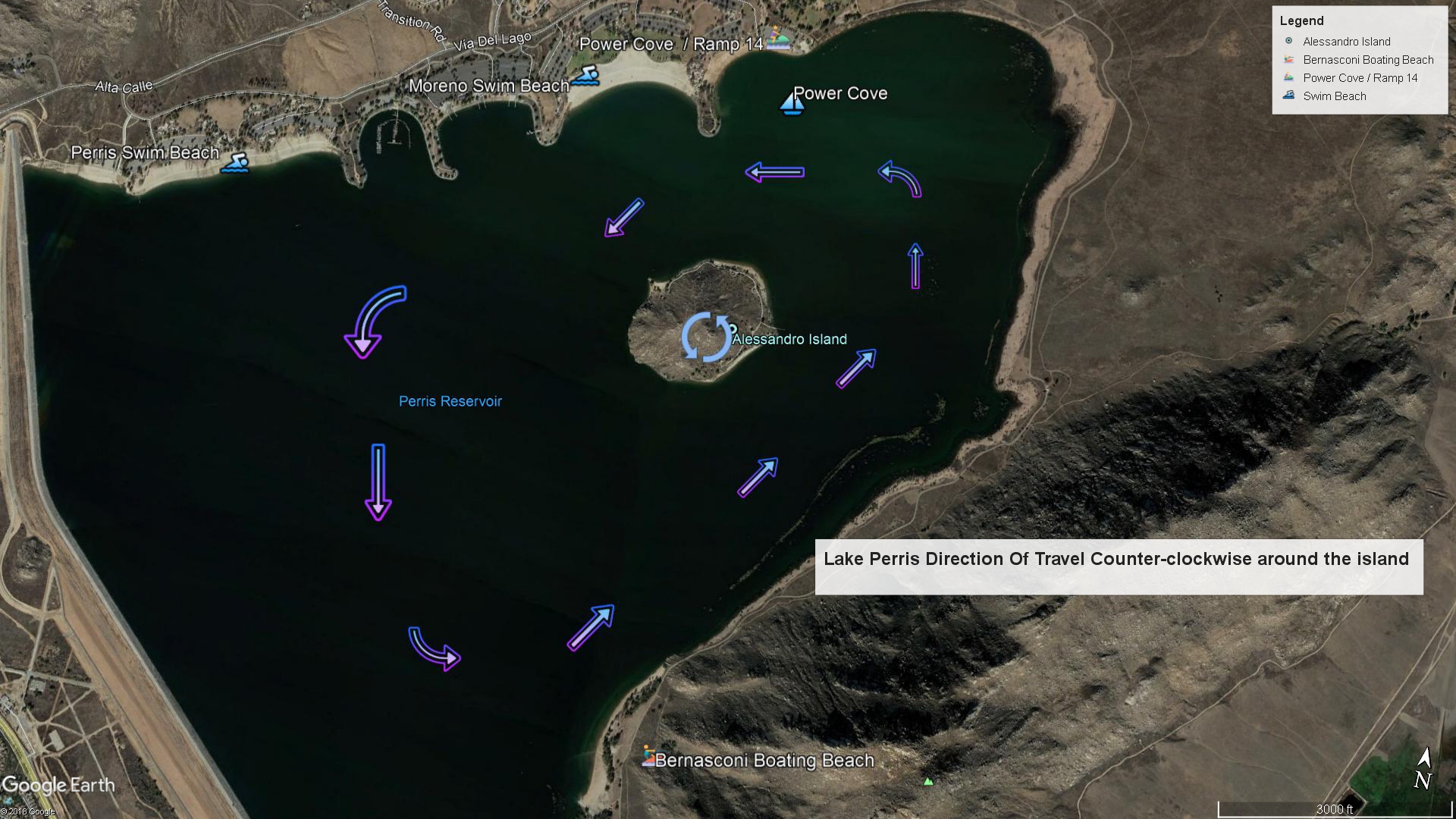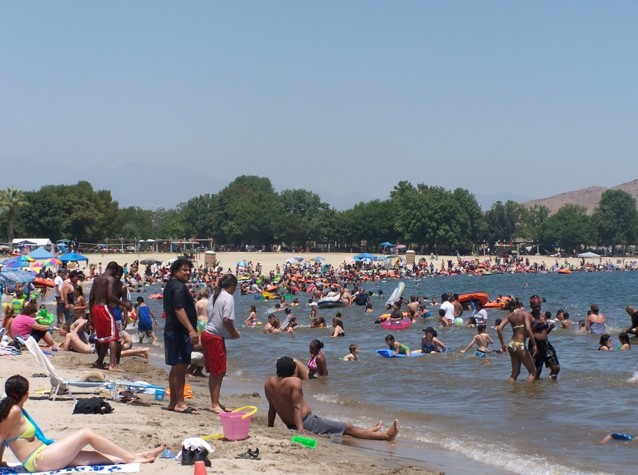Laws, Regulations, and Public Safety
Park Laws, Regulations, and Public Safety

Lake Perris is a California State Park Recreation Area. State Parks are protected by statutes contained in the Public Resource Code and the California Code of Regulations. In addition to these laws, all State laws including traffic laws apply and are enforced. Our State Park Peace Officers (Rangers and Lifeguards) are fully-sworn peace officers and are tasked with public safety, park protection, and resource management.
We would like to emphasis the following during your visit:
- The possession and/or consumption of alcoholic beverages (this includes alcohol poured into a different container) is prohibited in all day use areas.
- Alcohol is only allowed in your overnight camp site and you may also consume alcohol from a vessel.
- All traffic laws apply in the park as they are state roadways. Our speed limits are low for the safety of bicyclists, pedestrians, and children in the park.
- Do not drink or boat and drive. On average over 50 of our visitors are arrested for driving under the influence. Be smart and designate a sober driver!
- The vending and selling of items, food, or services within park boundaries is prohibited without a permit or contract with the State.
- Passengers in a vehicle must be in the vehicle with seat belt fastened. It is dangerous and illegal to let passengers ride without seatbelts, in the bed of your truck or in a vessel while on the road.
- Motorized vehicles (cars, miniature motorcycles, golf carts, etc.) driven in the park must be registered with the DMV and have a street legal license plate.
- Motorized vehicles must remain on the pavement. Please do not park or drive off road or drive motorized vehicles on the beach.
- Do not attach or hang items from park structures or trees. Hammocks, swings, etc. must be free-standing and not hung from or attached to park buildings or trees.
- The use of all non-U.S. Coast Guard approved flotation devices is prohibited. These include pool toys, rafts and floats.
Park Posted Orders
Per the Public Resources code, each State park may enact special rules to ensure visitor safety and park protection. Click on the following form links to view these park laws.
District Posted Orders
950-21-003 E Bike Posted Order
Lake Perris State Recreation Area posted orders
LPSRA 952-21-002 boating restrictions
LPSRA 952-21-004 Alcoholic beverage prohibition
LPSRA 952-21-005 prohibited water use
LPSRA 952-21-007 prohibited aquatic activities
LPSRA 952-21-008 fishing prohibitions
LPSRA 952-21-009 designated swim areas
LPSRA 952-21-011 juvenile curfew

Boating Laws and Rules
Boating License Requirement (It's the Law)
Age and Operator Restrictions
California law requires a person to be 16 years of age or older and in possession of his/her California Boater Card to legally operate a vessel powered by a motor of 15 hp or more, including personal watercraft (PWCs).
Exceptions to this law are:
Persons 12 to 15 years of age may operate a vessel powered by a motor of 15 hp or more, including PWCs, if they are supervised on board by a person at least 18 years of age and in possession of his/her California Boater Card. There is no age restriction for operating a sailboat under 30 ft. long (with wind as the main source of propulsion) or a dinghy used between a moored vessel and shore or between two moored vessels. It is illegal to permit a person under the age of 16 to operate a vessel powered by a motor of 15 hp or more, including PWCs, without onboard supervision by a person 18 years of age or older who is in possession of his/her California Boater Card.
To get your required CA Boater's License please visit CA Boater Card Website
In California, each year a new age group is being added to those who are required to possess a valid card. By 2025, all persons who operate on California waters will be required to have one. Once issued, the card remains valid for a boat operator’s lifetime. California Harbors and Navigation Code Section 678.11(b) contains the following phase-in schedule based on operator age:
- January 1, 2021 – Persons 40 years of age or younger
- January 1, 2022 – Persons 45 years of age or younger
- January 1, 2023 – Persons 50 years of age or younger
- January 1, 2024 – Persons 60 years of age or younger
- January 1, 2025 – All persons regardless of age
Carry the Card: Vessel operators who are required to have a Boater Education Card must carry the card on board the vessel and have it available for inspection by an enforcement officer.
Penalty: Not carrying your Boater Education Card when one is required can result in a fine.
General Boating Regulations
If you own a sailboat over eight feet long or a boat/vessel with a motor (no matter the size), you must register it with DMV in order to legally operate it on California waterways.
Vessels used in fresh waters are required to display a current Quagga sticker, unless the vessel is used only in marine waters, or exempt by law.
Vessels from out of state must have valid registration in the state of principal use and cannot be remaining in California over 90 consecutive days.
CA DIVISION OF BOATING & WATERWAYS - ABCs of California Boating
Certificate of Ownership: Keep your Certificate of Ownership in a safe place—this is your evidence of title to the vessel.
Certificates issued will also contain the boat’s identifying number (known as the hull identification number),
which is the number permanently marked on the transom by the manufacturer or builder,
or the number assigned by DMV and marked on the transom by the owner.
California Department of Vehicles
- Definition of a Vessel: Any watercraft used or capable of being used as transportation on the water; except a seaplane or a vessel on a fixed track or arm.
- Vessel operators must follow all CCR-Title14 and applicable Boating Laws, Lake Perris Posted Orders, Harbors & Navigation Laws and Federal Inland Navigation Rules.
- Vessel operators must be 16 years of age (12 yrs. of age when supervised by an adult)
- Direction of travel is counterclockwise (except vessels under sail, kayak, or canoes).
- Maximum speed limit on the lake is 35 MPH.
- 5 mph zones are non-directional. 5 mph zones are from shore line to buoys and on the east end (island side) of the lake, due to hidden hazards and shallow water in that portion of the lake.
- 5 mph max speed and running lights are required during restricted visibility, before sunrise, and after dark.
- Vessels are not allowed within 50 feet of posted swim areas.
- Free style/Trick riding is not permitted. This includes but is not limited to: 360’s, 180’s, submarining, jumping boat wakes within 100 feet of a vessel.
- All persons, except water-skiers (etc.), must be in the passenger compartment while vessel is under way.
- BOW, GUNWHALE OR TRANSOM RIDING IS PROHIBITED!
- Dogs are not allowed on the beach, in the water or on the island. Dogs are allowed on vessels but not in the water.
- Shoreline refueling is Prohibited, Refuel in parking lots - Protect our water and our beaches.
- ALCOHOL possession and consumption is allowed from your vessel only. You may not bring alcohol on shore in day use areas. Alcohol is also permitted in your registered campsite.
- Boating Under the Influence (BUI) will be subject to arrest and booking into County Jail.
- Boaters are required to know and follow all California State boating laws, even if not listed above.
Waterskiing, Wakeboards, Wake Surfing, ans Inflatables
- Inflatables are now allowed to be towed behind boats
- When a vessel is in a towing operation (skier, wakeboard, inflatable, etc.) the vessel must have an observer, at least 12 years or older, holding an orange flag and in visual contact with the person in tow and in verbal communication with the vessel operator.
- Water-skiing, towables (etc.) are allowed only during daylight hours.
Lifejackets and the Law
FOR A BOAT LESS THAN 16 FEET LONG, OR A CANOE OR A KAYAK OF ANY LENGTH:
 Everyone on board a personal watercraft (popularly known as “jet skis”) and anyone being towed behind a vessel must wear a Coast Guard-approved life jacket.
Everyone on board a personal watercraft (popularly known as “jet skis”) and anyone being towed behind a vessel must wear a Coast Guard-approved life jacket. A Coast Guard-approved life jacket must be carried for each person on board.
A Coast Guard-approved life jacket must be carried for each person on board. If stored, these life jackets must be readily available (easy to get to), and you must show passengers the location of life jackets and other safety equipment.
If stored, these life jackets must be readily available (easy to get to), and you must show passengers the location of life jackets and other safety equipment.
FOR A BOAT 16 FEET OR LONGER, YOU MUST CARRY FOR EACH PASSENGER:
 The same requirements as above and
The same requirements as above and One immediately accessible (easy-to-reach) Type IV device designed for throwing – such as a ring, cushion or horseshoe buoy for each boat.
One immediately accessible (easy-to-reach) Type IV device designed for throwing – such as a ring, cushion or horseshoe buoy for each boat.
OTHER REQUIREMENTS
 All Vessels
All Vessels
- Whistle or other sound producing device is required on powered vessels, recommended on all others
- Other suggested equipment includes a paddle, a 20 foot tow line, and an anchor.
- Navigational lights during sunset to sunrise or during limited visibility
 Powered Vessels
Powered Vessels
- An adequate muffler to meet state noise level requirements
- USCG approved fire extinguisher
- Current vessel registration
 Non-Powered Vessels:
Non-Powered Vessels:
Canoe, Kayak, Standup Paddle Boards (SUPs)- SUPs are considered vessels and must have a personal floatation device. Leashes are recommended and are your best connection to your floatation.
- SUPs are not recommended in high-speed, open water during high vessel traffic.
Lake Perris Navigational and Direction of Travel Map


Swimming Rules and Beach Safety
Being a strong swimmer does not make you drown proof! Drowning is one of the leading causes of accidental death for all ages nationally, and is the SECOND leading cause of accidental death for children. Tragically, drowning continues to be the leading cause of accidental death in State Parks.
Swimming at Lake Perris is a great way to cool off from the hot summer. From Memorial Day to Labor Day our swim beaches are staffed with lifeguards. Even with our lifeguards please ensure your family's safety by taking the following steps.
- First, learn to swim and teach your children to swim before heading out to any swimming area.
- Get professional training, but never rely solely on swimming lessons to protect yourself or a child from drowning.
- If you are not a strong swimmer, wear a life jacket.
- Swim near a lifeguard if one is available. (Lake Perris is Swim-at-your-own-risk during the off-season and weekdays).
- It's recommended that children always wear life jackets when swimming in lakes and rivers.
- Be sure every child wears a proper fitting life jacket when on the boat or near water. Air-filled swimming aids, such as "water wings" or inner tubes, are not safe substitutes for life jackets.
- Never rely on a life jacket alone to protect your child.
- Never leave a child alone in the water, even just to run to the restroom or answer the phone!
- Drowning is the second leading cause of accidental death among children! Drowning isn't full of yelling and splashing-drowning is silent, and it only takes a moment for a child to slip below the surface.
- Stay hydrated! Summer heat can lead to dehydration and exhaustion even when swimming. Take frequent breaks, wear sunscreen, drink plenty of water, and avoid alcohol.
- Never swim alone! Even the most experienced swimmers can get tired or muscle cramps. Having a buddy can save a life.
- Assess your skills and don't take chances. Know your swimming skills and don't rely on floatation devices. If you don't know how to swim, don't get in the water, even with a raft or other floatation device
Swimming Rules
- Only swim in designated swim areas. Perris Beach (Lot 1-4) and Moreno Beach (Lots 8-10) are the only designated swim areas.
- If you swim in locations outside of the designated swim areas you do so at you own risk. Boaters and swimmers don't mix. Swimming in the launch ramp or in power cove is dangerous as boaters may not see you when travel to and from the shoreline.
- No diving. Diving is dangerous as the water depth may be uncertain and hazards may exist below the water surface that you can't see.
- Do not swim to the buoy line. If you are going to swim long distances, swim parallel to shore where you can touch the bottom if you get in trouble. Stay within the designated swim area.
